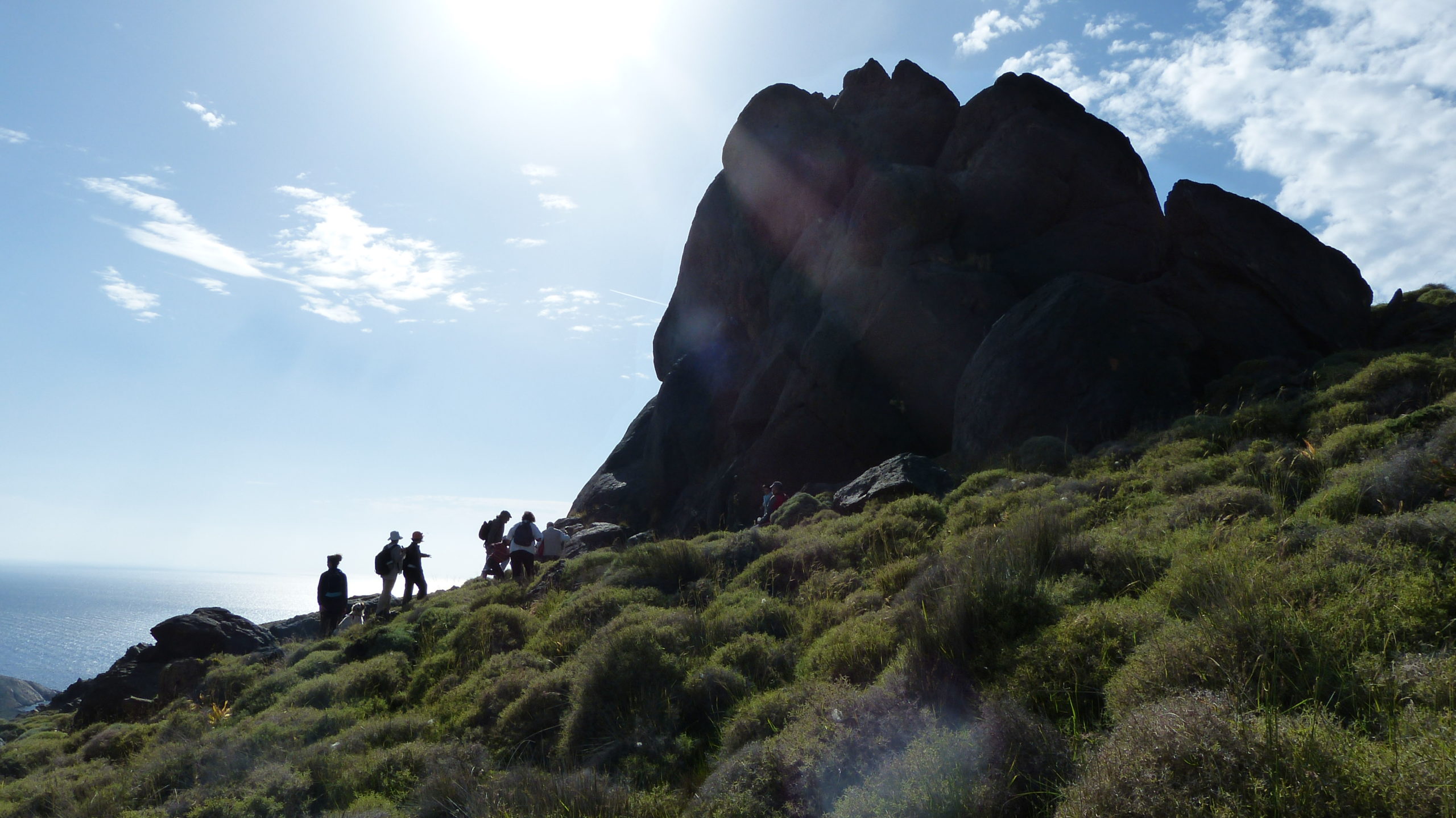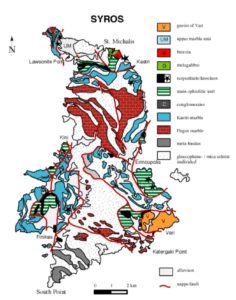Syros is situated in the center of the island group of the Cyclades. Its name derives from the Phoenician ‘ousyra’ or ‘ousoura’ which means ‘happy’. Geologically, Syros is covered in its greater part by metamorphic rocks* of the Atticocycladic mass.
In northern Syros there are outcrops of some rare metamorphic rocks, among which eclogites occupy a special position. They are rounded, dark-colored rocks, which stand out impressively in the landscape.
They are the product of metamorphism under very high pressures and relatively low temperature of mafic, mainly metagabbro rocks, that is, metamorphism of the blueschist type with the characteristic mineral glaucophane that was discovered on Syros in 1845.
Indicatively there have been referred pressure conditions in the range of 14-20 kb, which is a pressure that corresponds to a 40-60 km depth in the lithosphere in the subduction zone of an orogenic belt.
The geochronological data support a geodynamic process in depth in the Eocene (40-50 million years). Therefore aeroliths constitute an important geological site for the observation of geodynamic phenomena that happen at the limit of the lithosphere and the mantle.
The geological position of the eclogites is inside a formation of metamorphic wild flysch with a rich contribution of mafic and ultramafic rocks that today constitutes an ophiolitic mélange. We can visit the site by following sign-posted paths that lead to the aeroliths.
*Metamorphic rocks are these rocks that result from others, pre-existing ones, after undergoing histological, mineral and chemical changes without passing from the melting stage.
source: Atlas of geological monuments of the Aegean, Ministry of the Aegean, 2002


